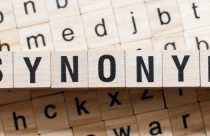Anthropomorphism in Academic Writing

Do “bacteria actually prefer XYZ as a growth medium”? Do “cows in the United States prefer to ‘socialize’ when they eat”? Or do “yeast strains found in rich soil regularly attack each other”? If you, as an academic writer, have said “yes” to any or all of these questions when writing your manuscript, you are guilty of “anthropomorphism.”
We tend to ascribe human feelings and behaviors to anything we are discussing, including the research papers we are writing. This is called Anthropomorphism or Personification. While anthropomorphism makes for a compelling storytelling, especially in mythology and religion, it has very little place in academic manuscripts.
According to the APA guidelines, “…writing with anthropomorphism means that the writer attributes an action to objects that cannot take that action…” Objects typically cannot take human-like action and it is important that the action (verb) which the object does or takes is appropriate for that object.
Also, according to the Merriam-Webster’s Collegiate Dictionary, Tenth Edition, anthropomorphism is “an interpretation of what is not human or personal in terms of human or personal characteristics.”
One of the main aims of academic writing is “clear communication.” That is why continuity, smoothness, economy of expression, an appropriately formal tone, and precision and clarity are so important.
Writing with clarity is especially important when it comes to an international audience or an audience whose first language may not be English. These audiences are best served by presenting text in a straightforward manner. Here are some tips to ensure that your writing is clear and coherent when it comes to anthropomorphism:
- Make it clear who is doing what action
- Ensure that only humans get human-like characteristics and actions
- Be direct in your language and sentence structure
- Ensure that descriptions are always directly next to what it is that they are describing
We shall now discuss some common academic examples of anthropomorphism.
Example 1
Incorrect: Modern factories argue that advanced technologies should be adopted for the cultivation of vegetables and crops.
Issue: Considering the context from which this sentence was extracted, factories cannot argue. Only people or groups of people (workers and/or management in factories) can.
Correct: Personnel in modern factories argue that advanced technologies should be adopted…
Example 2
Incorrect: The battery spoke about quantitative MRI biomarkers related to itself in several scenarios.
Issue: A battery cannot speak. Active verbs such as “speak” need to be taken by a person or group of people.
Correct: We spoke about quantitative MRI biomarkers as related to the battery in several scenarios.
Example 3
Incorrect: Surgical site infections often talk about the contamination of saline solutions.
Issue: Surgical site infections cannot “talk”…
Correct: Surgical site infections often result in the contamination of saline solutions.
Example 4
Incorrect: The frequency response analyzes the mistuned runner in a steam turbine.
Issue: The frequency response cannot analyze.
Correct: The frequency response is used to analyze the mistuned runner in a steam turbine.
Do keep in mind that reducing anthropomorphic writing has to do with what makes sense. If it makes sense for that object to take that action, then it is acceptable.
Quite often, organizations, as groups of people, can take actions that are appropriate for human actors. For example:
- The school board voted to require school uniforms.
- The Society of Professional Journalists issued new ethics guidelines.
- The hospital implemented new procedures regarding RN staffing requirements.
Sometimes, theories, models, tables, data, results, and so on, can also take some actions that make sense for these nouns, as the diagram indicates.

So, the next time you are writing a manuscript, do keep in mind that anthropomorphism might creep in without you being aware of it. Remember, you can attribute only those actions to objects that are feasible. It is always people who act, not objects. Here’s to the effective reduction of anthropomorphism during academic writing!
Reference:
Walden University Writing Center. Other APA Guidelines: Anthropomorphism. Retrieved from http://academicguides.waldenu.edu/writingcenter/apa/other/anthropomorphism








